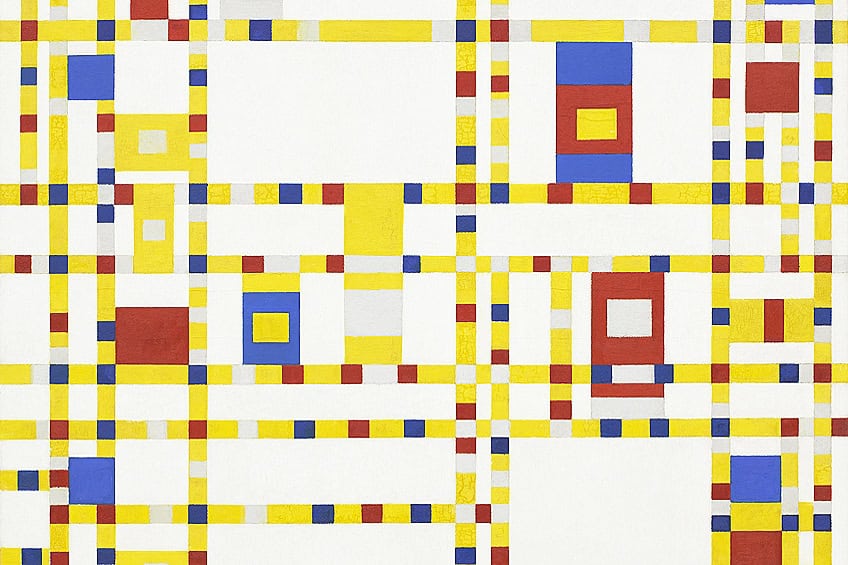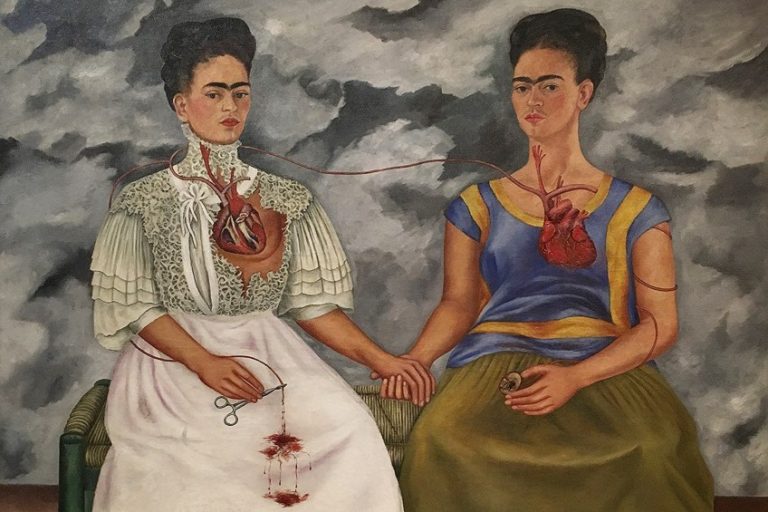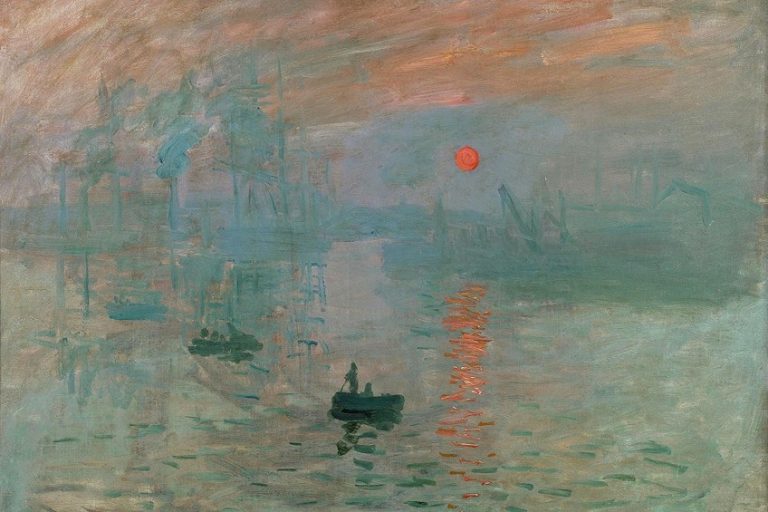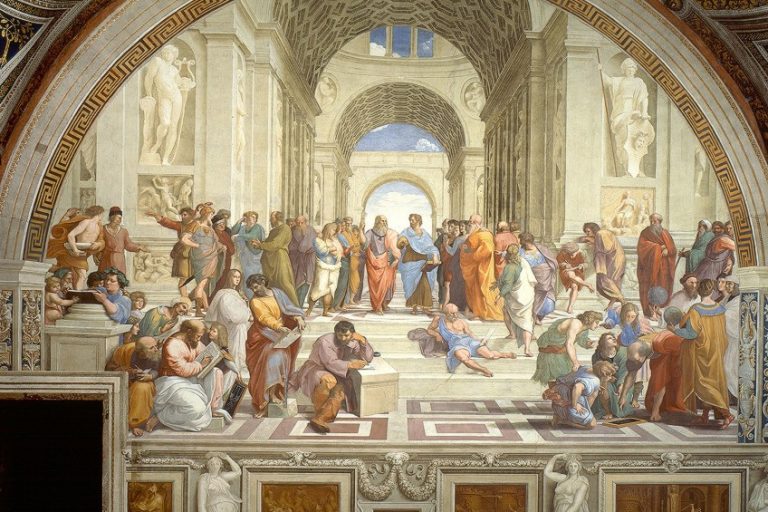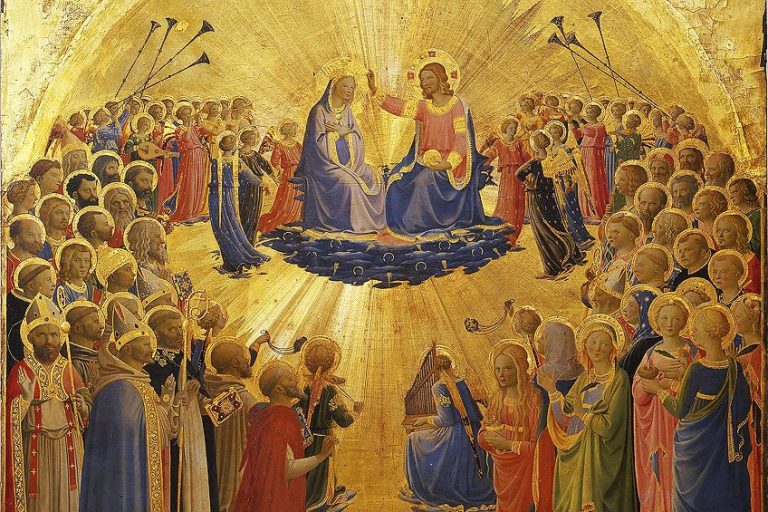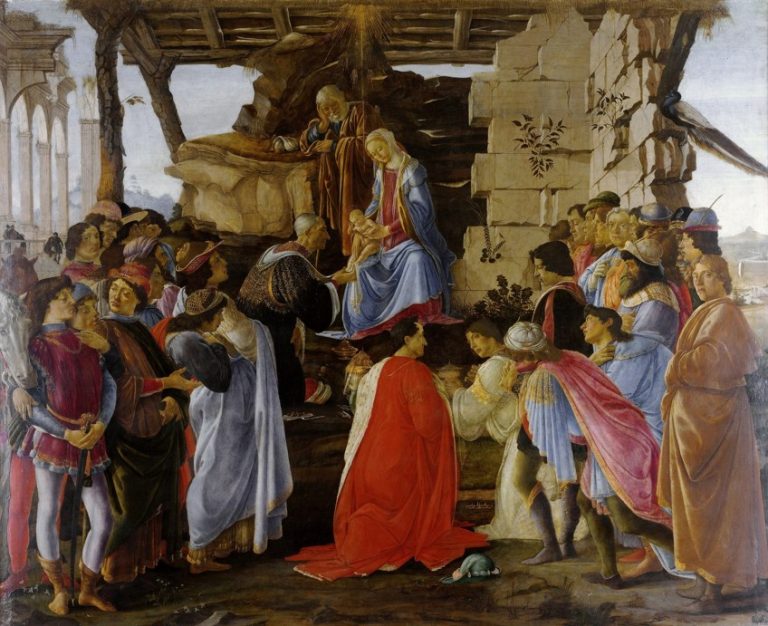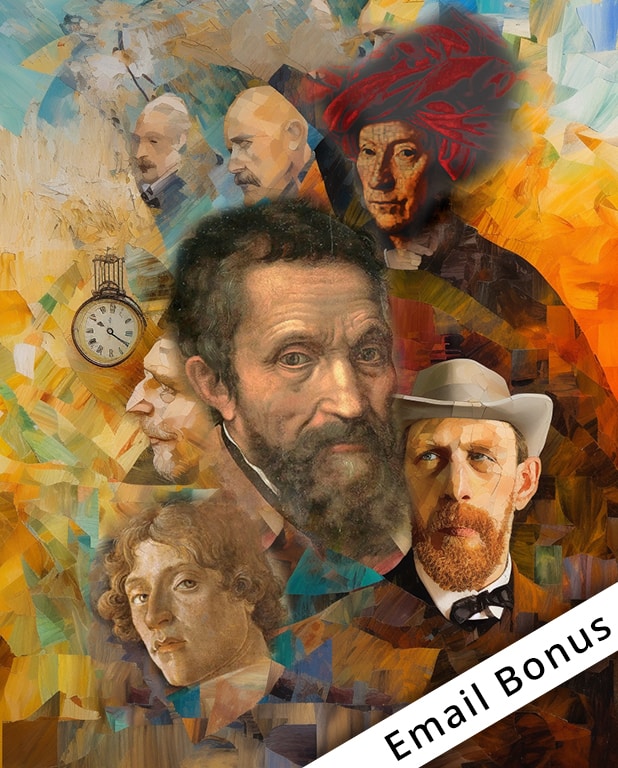Broadway Boogie Woogie by Piet Mondrian – A Masterpiece
Piet Mondrian’s “Broadway Boogie Woogie,” painted during his time in New York City, stands as a testament to his transformative late style. Created between 1942 and 1943, this artwork reflects the vibrant energy of the city through its dynamic arrangement of color blocks, abandoning the use of black lines that characterized his earlier compositions. It is a celebration of Mondrian’s adaptation to the rhythm of New York, inspired by the lively boogie-woogie music and the grid layout of Manhattan streets. The painting marks a significant point in modern art, where geometry meets rhythm, creating a visual symphony that draws viewers into Mondrian’s vision of urban life. Each square bursts with life, echoing the pulsating beat of the metropolis, while maintaining a meticulous balance characteristic of Mondrian’s abstract expressions. The intricate design not only encapsulates the essence of New York but also presents a deeper look into the evolution of abstraction in modern art.
Key Takeaways
- Mondrian’s painting was influenced by New York’s music and layout.
- It represents a key shift to vibrant color in abstract art.
- The artwork captures urban energy and modern art’s evolution.
| Artist | Piet Mondrian (1872 – 1944) |
| Date Painted | 1942 – 1943 |
| Medium | Oil on canvas |
| Genre | Geometric Abstraction |
| Period / Movement | De Stijl / Neoplasticism |
| Dimensions (cm) | 127 x 127 |
| Series / Versions | One of Mondrian’s final works |
| Where Is It Housed? | Museum of Modern Art, New York |
| What It Is Worth | Considered priceless; part of MoMA’s permanent collection |
Historical Context of ‘Broadway Boogie Woogie’
In 1942, Piet Mondrian began working on Broadway Boogie Woogie, a significant piece in his artistic career. This period was marked by his relocation to New York City, fleeing the turmoil of World War II. New York, as a vibrant and burgeoning metropolis, profoundly influenced his artistic expression.
Mondrian was drawn to the rhythm and energy of the city. This vibrancy echoed the fast-paced rhythm of Boogie Woogie music. A notable influence of jazz, especially its boogie-woogie style, can be seen in the structured yet rhythmic grid of the painting, mirroring the city’s pulse and musical landscape.
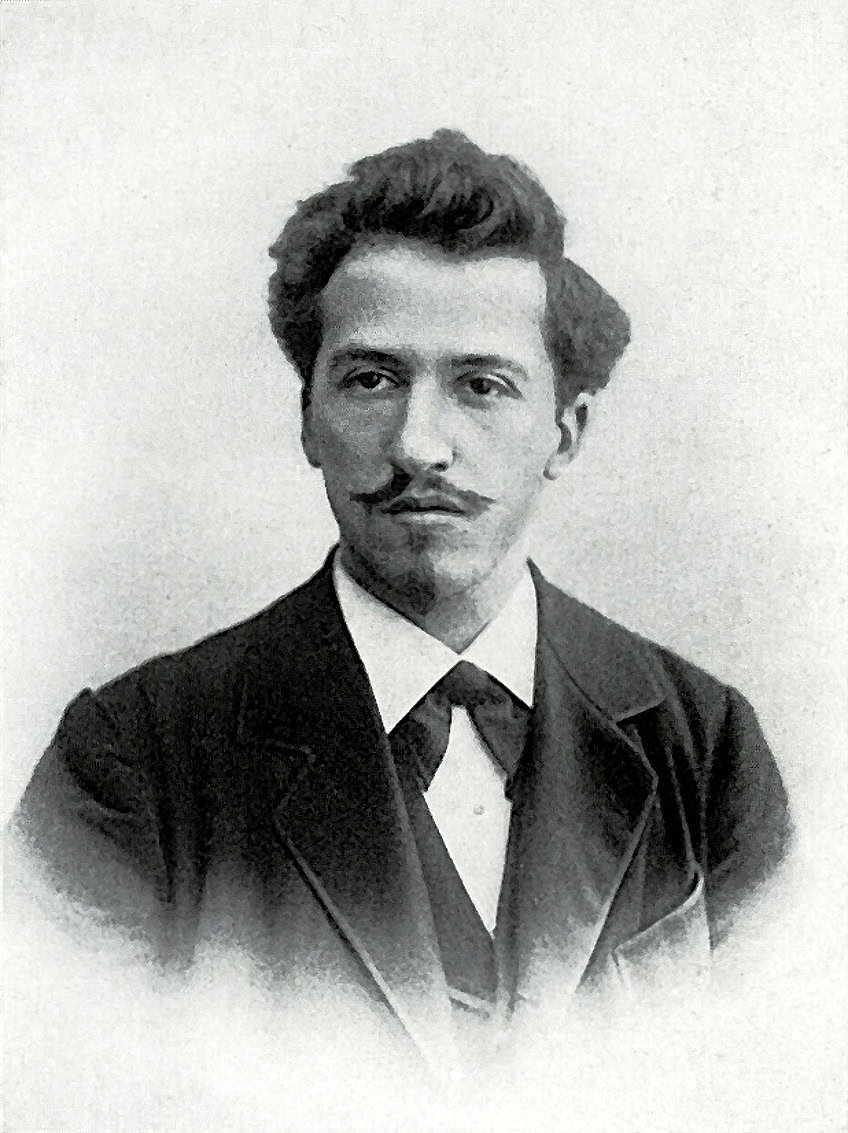
The painting departs from Mondrian’s earlier austere style. The use of bright colors and small, rectangular patterns mimics the city’s dazzling lights and dynamic street life. The cultural milieu of New York during the 1940s resonated with his vision, allowing him to reinterpret his artistic language.
World War II had driven Mondrian from Europe, and in New York, he found a new artistic home. His immersion in the city’s eclectic culture inspired a shift in his work, with Broadway Boogie Woogie being a quintessential representation of this transformation. It reflects a synthesis of personal experience, global events, and artistic exploration.
Artistic Analysis of ‘Broadway Boogie Woogie’
Broadway Boogie Woogie is a vibrant painting by Piet Mondrian that captures the energy and rhythm of New York City. It combines primary colors and geometric abstraction in a distinct grid pattern, echoing the essence of the metropolis.
This piece illustrates the dynamic flow of the city through visual and rhythmic elements.
Composition and Color
The painting uses bold primary colors — red, blue, and yellow — combined with white and grey, creating high contrast and visual clarity. Mondrian employed oil on canvas to achieve a bright and polished finish. The placement of colors in a seemingly random yet precise manner adds dynamic energy, simulating the vibrant and bustling character of the urban environment in a lively and engaging way.
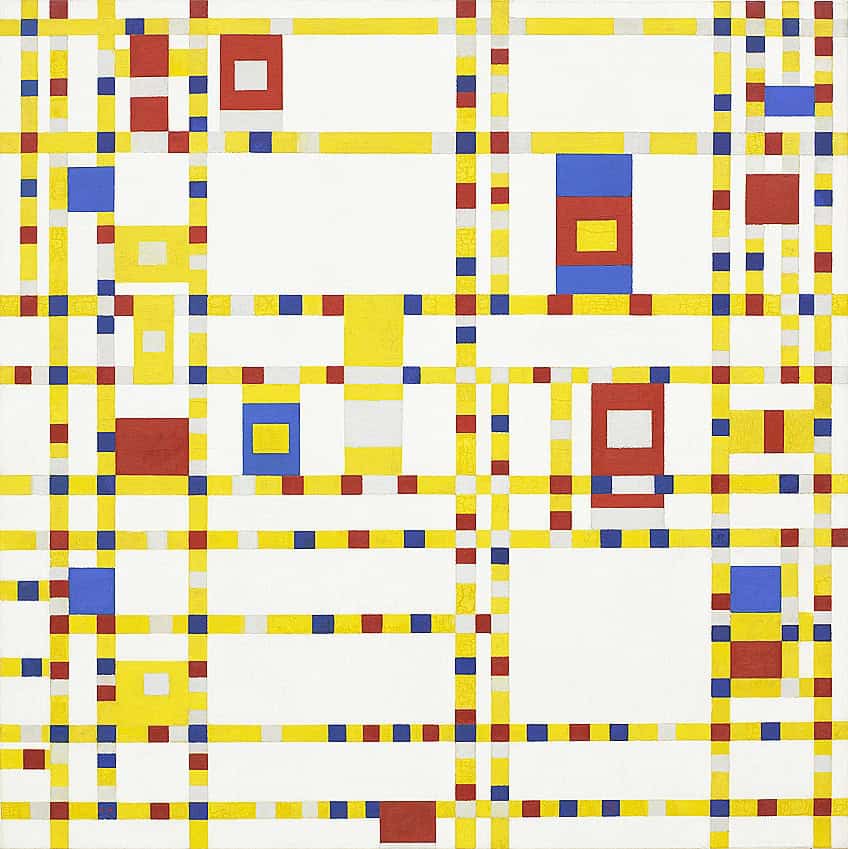
Geometric Abstraction and Grid Structure
Mondrian’s work is a hallmark of geometric abstraction, reflected in the grid structure that defines the painting. This geometric foundation is reminiscent of a city grid, chaotic and ordered, embodying jittery motion through its intersecting lines and blocks.
The organized chaos encapsulated by the grid mirrors the essence of Mondrian’s Neoplasticism, focusing on basic forms and colors to represent deeper underlying truths about life and movement.
Representation of New York City Life
The piece serves as an algorithmic translation of New York City’s vibrancy, using the grid as a metaphor for the city’s streets. Elements within the composition convey the movement and energy of city life, reminiscent of neon lights and bustling activity. Mondrian draws inspiration from the boogie-woogie genre, representing music and dance visually, capturing NYC’s essence with rhythmic balance and visual harmony.

Influence and Legacy
Since its creation, Broadway Boogie Woogie has been influential in modern art, impacting the development of abstract styles worldwide. It embodies Mondrian’s final evolution of his artistic philosophy, bridging music and visual art while influencing future explorations of geometric abstraction.
The painting continues to captivate audiences, maintaining its relevance as a timeless symbol of the amalgamation of art and city life.
Frequently Asked Questions
“Broadway Boogie Woogie” is a notable piece within Piet Mondrian’s body of work, reflecting significant shifts in his artistic approach. The painting showcases Mondrian’s response to the cultural and musical landscape of New York City.
What does ‘Broadway Boogie Woogie’ signify in the context of Mondrian’s artistic evolution?
“Broadway Boogie Woogie” marks a departure from Mondrian’s earlier works, using vibrant color blocks instead of the black lines that characterized his signature style. This evolution illustrates his adaptation to new influences and the development of his visual language.
How does ‘Broadway Boogie Woogie’ reflect the influence of jazz and New York City?
The painting is influenced by the dynamic, rhythmic qualities of jazz music, embodying the lively spirit of New York City. Mondrian translates the city’s energy into the composition, with its intersecting lines and bright colors suggesting movement and the vibrant pulse of urban life.
What artistic techniques did Mondrian employ in creating ‘Broadway Boogie Woogie’?
Mondrian utilized multicolored segments to form a grid pattern, breaking away from previous methods involving monochromatic blocks. The use of primary colors alongside white, gray, and blue creates a sense of motion, mirroring the bustling activity and rhythmic nature of a metropolis.
How has ‘Broadway Boogie Woogie’ impacted the interpretation of abstract art?
As one of Mondrian’s final works, “Broadway Boogie Woogie” has reinforced the possibilities of abstraction as a means to convey emotion and movement. Its innovative use of color and form has influenced artists exploring geometric abstraction and the integration of cultural elements into visual art.
Isabella studied at the University of Cape Town in South Africa and graduated with a Bachelor of Arts majoring in English Literature & Language and Psychology. Throughout her undergraduate years, she took Art History as an additional subject and absolutely loved it. Building on from her art history knowledge that began in high school, art has always been a particular area of fascination for her. From learning about artworks previously unknown to her, or sharpening her existing understanding of specific works, the ability to continue learning within this interesting sphere excites her greatly.
Her focal points of interest in art history encompass profiling specific artists and art movements, as it is these areas where she is able to really dig deep into the rich narrative of the art world. Additionally, she particularly enjoys exploring the different artistic styles of the 20th century, as well as the important impact that female artists have had on the development of art history.
Learn more about Isabella Meyer and the Art in Context Team.
Cite this Article
Isabella, Meyer, “Broadway Boogie Woogie by Piet Mondrian – A Masterpiece.” Art in Context. August 10, 2025. URL: https://artincontext.org/broadway-boogie-woogie-by-piet-mondrian/
Meyer, I. (2025, 10 August). Broadway Boogie Woogie by Piet Mondrian – A Masterpiece. Art in Context. https://artincontext.org/broadway-boogie-woogie-by-piet-mondrian/
Meyer, Isabella. “Broadway Boogie Woogie by Piet Mondrian – A Masterpiece.” Art in Context, August 10, 2025. https://artincontext.org/broadway-boogie-woogie-by-piet-mondrian/.


